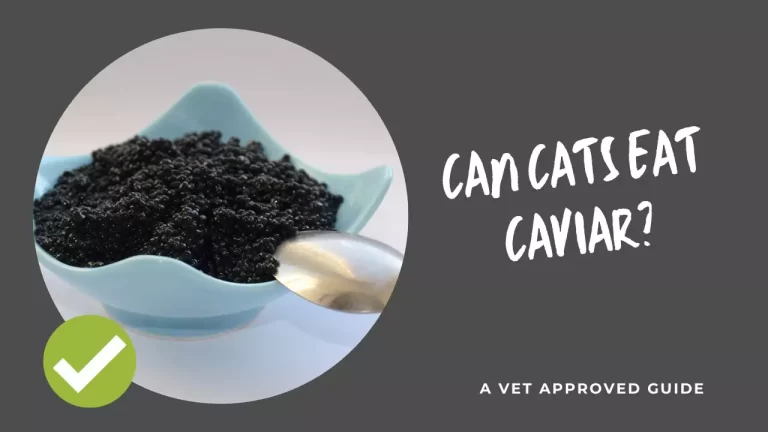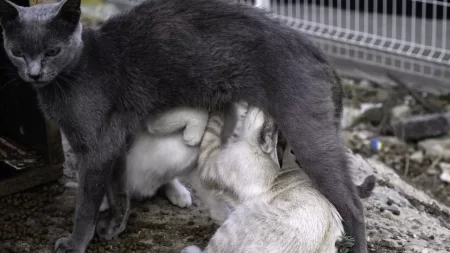Yes, Cats can eat caviar, but it is not the best form of a treat for them. Caviar is the term used for the unfertilized eggs of wild sturgeon fish, which are preserved with salt and never cooked.
Artificial caviar is made of a dough with color, jelly, and flavor to imitate real caviar.
There are some risks and benefits to feeding caviar to cats. The benefits are that caviar contains high amounts of omega-3 fatty acids, which are good for cats’ health.
The risks are that caviar can be contaminated with salmonella bacteria, which can cause food poisoning in cats, and that caviar is very salty, which can increase cats’ sodium intake and cause dehydration or sodium poisoning.
What is Caviar?
The unfertilized eggs of sturgeon fish, collected from their ovaries, are called caviar. Depending on the sturgeon species, egg color, size, and processing technique, caviar comes in different varieties. The most popular types include osetra, beluga, Kaluga, sevruga, sterlet, and hackleback.
Due to its scarcity, expensive price, and excellent flavor, caviar is a luxury meal. It’s eaten as an appetizer or snack with simple crackers, toast, or cucumber slices. Salads, soups, spaghetti, and sushi may be garnished with it.
Nutritional Value of Caviar
Caviar is highly nutritious, even when consumed in small amounts. A 1-ounce (28-gram) serving of caviar provides (1):
- Calories: 75
- Protein: 7 grams
- Fat: 5 grams
- Carbs: 1 gram
- Vitamin B12: 236% of the Daily Value (DV)
- Selenium: 34% of the DV
- Iron: 19% of the DV
- Sodium: 18% of the DV
Caviar is rich in vitamin B12, which is needed for the brain system, DNA creation, and red blood cell development. It offers selenium, an antioxidant that protects cells and improves thyroid function. Oxygen transport and energy metabolism need iron.
Caviar also contains EPA and DHA, omega-3 fatty acids. These aid heart, brain, skin, and inflammation. 800 mg of EPA and 1,080 mg of DHA in a 1-ounce (28-gram) portion of caviar exceeds the daily recommended consumption of 250 mg each (3).
Is Caviar Safe for Cats?
The short answer is yes, cats can eat caviar in moderation. Caviar is not toxic or harmful to cats as long as it is fresh and unprocessed.
Caviar’s high protein and omega-3 concentration may really benefit cats.
However, there are several precautions to take before feeding your cat caviar. First, caviar is heavy in salt, which may cause dehydration, high blood pressure, and renal issues in cats. Caviar includes more than half of cats’ daily salt consumption in a 1-ounce (28-gram) meal.
Caviar may also include parasites or germs that may make cats sick. Unhandled raw or unpasteurized caviar is very dangerous. To minimize this danger, purchase caviar from trustworthy suppliers and verify the expiry date before giving it to your cat.
Thirdly, some cats may be allergic to fish or fish eggs and develop itching, swelling, vomiting, diarrhea, or respiratory problems after eating caviar. Stop feeding caviar to your cat if they have an allergic response.
Potential Health Benefits of Caviar for Cats
If fed in small amounts and occasionally as a treat, caviar can offer some health benefits for cats. Here are some of them:
- Caviar can support your cat’s skin and coat health due to its omega-3 fatty acids content. Omega-3s can help reduce inflammation, improve wound healing, prevent dryness and flakiness, and enhance shine and softness.
- Caviar’s vitamin A and E boosts your cat’s immune system. These antioxidant vitamins protect your cat’s cells from oxidative stress and illness.
- Vitamin A in caviar helps cats’ eyesight. Vitamin A prevents night blindness, cataracts, and retinal and corneal damage.
- Caviar’s vitamin B12 and DHA help your cat’s brain and nerves. DHA is essential for brain and eye development, whereas vitamin B12 is essential for nervous system development.
Tips for Feeding Caviar to Cats
If you want to feed caviar to your cat, here are some tips to follow:
- Your cat should only eat caviar occasionally. One or two teaspoons a week is adequate.
- Pasteurized or frozen caviar kills parasites and germs. Avoid smoked, salted, flavored, or chemically preserved caviar.
- Serve caviar without bread, crackers, or other toppings that may include cat-unfriendly components like garlic, onion, salt, or dairy.
- Refrigerate caviar in an airtight container and consume it within a few days. To avoid food poisoning, discard rotten caviar.
- Introduce caviar to your cat slowly. Start simple and observe how your cat reacts. Stop feeding caviar if your cat displays indications of discomfort, allergies, or disease.
Possible Side Effects of Caviar for Cats
Caviar may benefit cats in moderation, but excessive or inappropriate feeding might bring adverse effects. Here are some:
- Due to its high salt concentration, caviar may dehydrate and electrolyze cats. Increased thirst, urination, tiredness, weakness, and seizures might result. To avoid this, give your cat lots of water and restrict caviar.
- Due to parasites or bacteria, cats may become sick from caviar. This may cause vomiting, diarrhea, lack of appetite, fever, and blood in the stool. To avoid this, purchase caviar from trusted suppliers and keep it correctly.
- Cats may respond to caviar’s fish or fish egg component. Symptoms include itching, swelling, hives, sneezing, coughing, wheezing, and anaphylaxis. To avoid this, examine your cat for allergies before giving them caviar, and stop eating it if they have any responses.
Conclusion
Cats can eat caviar moderately. Its protein and omega-3 concentration may help cats. Due to its high salt level, parasites, germs, and allergies, cats may have negative effects. Therefore, only give your cat caviar occasionally, in little quantities, and with care.







